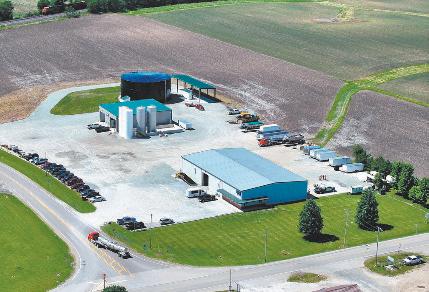AG Mag
REGENERATIVE AG PAYS OFF
Earthworms making a comeback
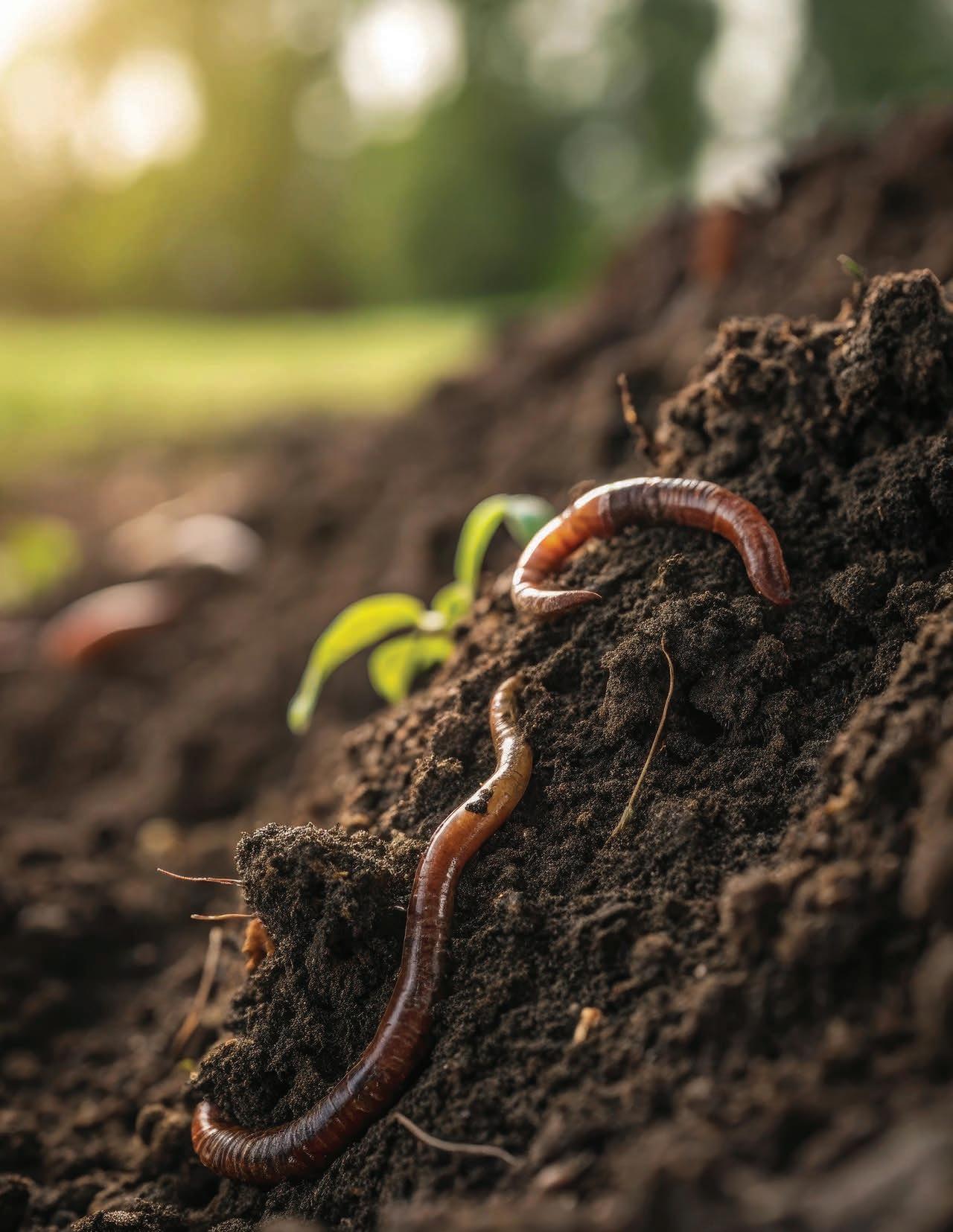
Also: RURAL MENTAL HEALTH
• Shortage of psychiatrists in rural areas
• Ag women face unique challenges
• IFB expands commitment to resources


Photographers
Designer

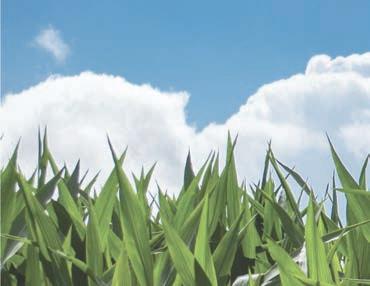





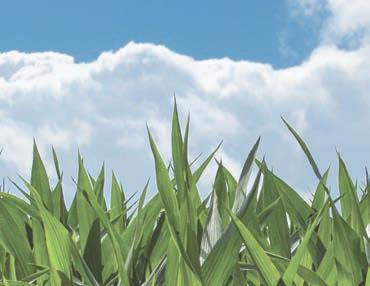

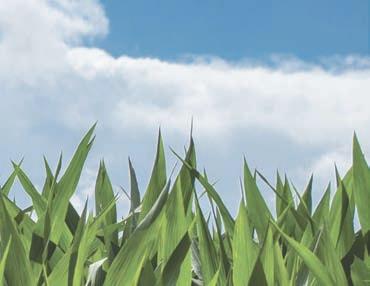


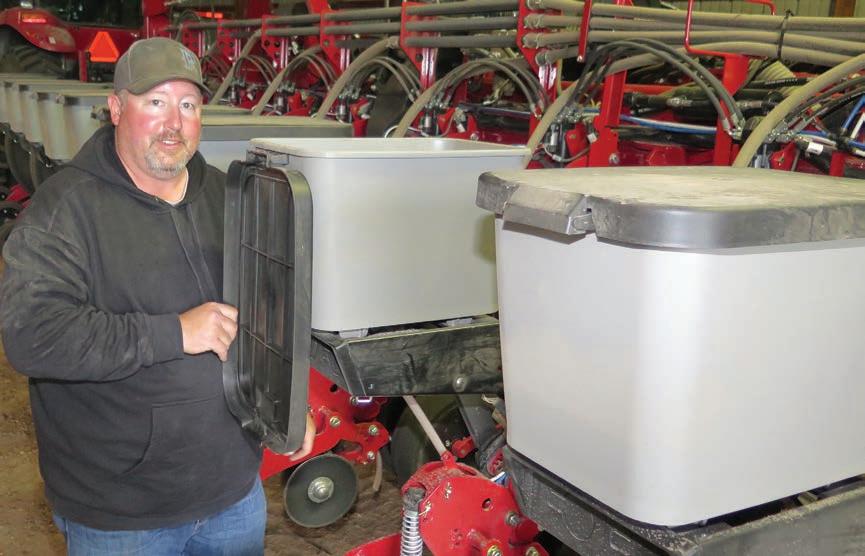

Earthworms making a comeback

Also: RURAL MENTAL HEALTH
• Shortage of psychiatrists in rural areas
• Ag women face unique challenges
• IFB expands commitment to resources


Photographers
Designer













By TOM C. DORAN tdoran@shawmedia com
DWIGHT, Ill. — It took just short of four weeks for Dan Parker to finally get the last seed in the ground.
“Planting season was pretty strung out. We got a really early start planting before Easter around April 15. We started with our beans and then it rained Easter weekend. We got back in after that and mostly planted corn for a while. Between the rainouts and everything we finally finished planting corn and beans May 12,” said Parker on May 20.
“By the time we finished planting, we had our other corn and soybeans that were coming up, and some corn was having trouble with the crust. So, we hurried up and hooked the hoe
up that day and started hoeing as soon as we got done planting. Thankfully, we got rained out from hoeing and that solved a lot of the crust issues and everything came up really good.”
Parker, a fourth-generation farmer, and his wife, Erika, farm with his father, Bob, and brother-in-law, Scott Mallaney, in Livingston and Grundy counties. His cousin, C.J. Parker, is also part of the farming operation.
Parker, Illinois Corn Growers Association District 5 director, representing Grundy, Kankakee, La Salle and Livingston counties, and ICGA treasurer, looks forward to the organization’s upcoming events.
They include its summer meeting in Bloomington and a visit from Japanese media to learn more about ethanol and corn production.
“We’re pretty excited to be able to talk to them,” Parker said. He’ll also be involved in plant-
ing the Dwight FFA plot when the soil is fit.
“The plot will be soybeans this year. The students are looking at high management versus standard or low management soybeans. Half of the soybeans will be fungicide and insecticide. I don’t know what all of the treatments are that they decided to put on the high management soybeans versus not putting it on so they can see all the difference,” Parker said.
His wife, Erika, Advanced Agrilytics precision agronomist, works with the students to develop a plan for the FFA plot.
“She has been meeting with them once a week or so and we’ll get it planted as soon as it dries up. Then they’ll put sweet corn on one end that they’ll give to the public. They’ll also plant popcorn on one end. They’ll bag that up and pop it at different events and sell some. We sold some at the FFA auction last year,” Parker noted.




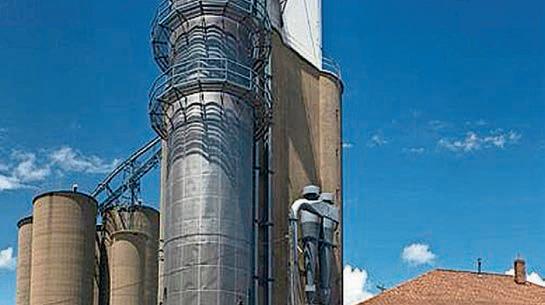













By TOM C. DORAN tdoran@shawmedia com
BLOOMINGTON, Ill. —
Most of the crops are planted in the northern two-thirds of Illinois, but multiple bouts of heavy rains in the southern part of the state have slowed many farmers to a standstill.
“Matt Reardon wrote in his May 13 Field Advisor blog that it’s been ‘a tale of two Illinois.’
Depending on where you are, that’s really indicative of what’s happening planting-wise,”
Kelsey Litchfield, Illinois Soybean Association agronomic outreach specialist, said of the Nutrien Ag Solutions senior atmospheric scientist to open a recent podcast.
ISA’s Field Advisor podcast featured a trio of Soy Envoys representing the state’s diverse
area.
“It’s pretty tough right now. We’re about 10% planted in my corner of the state and we cover 10 counties ri-ght along the Wabash River, about two counties deep,”

water to get rid of. There’s a lot of water standing and we’re getting one-half to three-quarters of an inch of rain every other day. We’ve got that cycle coming out of the southeast, and until we break that, we’re just going to be wet for a while.
said Mike Wilson, ISA Field Advisor in southeastern Illinois.
Wilson serves as Wabash Valley Service Company specialty products marketing manager.
“I was out driving around yesterday and I saw corn that’s already V4, V5, and soybeans that are starting to shoot the second trifoliate. That’s about 10% of the crop. Everything else is not planted.
“I saw a John Deere planter that was stuck and they were hooking a bulldozer to it and they weren’t raising the planter up. They were planting on the way out,” Wilson said.
“Things are starting to pick up, but we still have a lot of
“We probably have 7% to 8% of the soybeans planted and 10% to 11% on corn and that was all done the first week of April and they haven’t done anything since then.”
Matt Montgomery of Chatham, agronomy education lead at Beck’s Hybrids serving central and west-central Illinois, noted that during each national election, pundits refer to Ohio as a “snapshot of all of the diversity of the U.S.”
“I would say this part of the world begins to kind of do that, too. There’s been tremendous progress in western Illinois. I bet a lot of that is 89%, 90% planted, probably even better now,” he said.
“Then you get down to Route 108 that goes through Carlin-
ville and think about it sitting maybe 20 miles north of Route 16 as the unofficial boundary between central Illinois and southern Illinois. You get to Route 108 and it goes down to 20% to 25% planted at the end of the week (on May 10).
“You go down and start hugging Route 16 and it starts to fall off a little bit less than that, and you go over towards Shelbyville where it’s maybe 20% planted or something like that.
“It’s not quite the same situation that Mike was talking about, but you begin to sense that this part of the world is where that transition and those two different Illinois begins to happen. You have northern and western Illinois with some really good progress, then you start catching that northern border of southern Illinois and begin to see planting progress trailing off.”
Some of the earlier-planted soybeans in that portion of the state are at third trifoliate.
“As far as the progress in western Illinois, this is probably three years now that they’ve managed to be ahead of the curve. They managed to get it
in pretty timely compared to a lot of other places and really take advantage of some of that early planting yield benefit or at least risk reduction,” Montgomery said.

“They have some soils that aren’t necessarily the most forgiving — not quite southern Illinois soil, but sometimes can be a little bit unforgiving — and early planting benefit is going to serve them very well.”
Ottawa-based Seth Wiley, Babson Farms Inc. farm manager, gave his observation for La Salle, DeKalb, Lee and Ogle counties, where 95% of the corn and soybeans are planted, thanks to a third-straight year of ideal planting windows.
“I would say the week prior to Easter is when the first slug of crops went in the ground in the four counties that I cover. The corn is pushing V2. The soybeans are pushing the second trifoliate. It’s looking really well,” he said.
“There was another slough of planting in the last week of April. We got rained out May 1, and by then, as a whole, it was probably both corn and soybeans were probably 60% planted.

“There was very little left to put in the ground on May 14, and I think everything will be in the ground up here by the weekend.
“We’re really sitting pretty well and pretty optimistic about the crop right now. We are drier. We could use a half-inch of rain, but everything that’s in the ground looks pretty good.”
Wiley noted some rotary hoeing the first week of May due to crusting after the May 1 rain.
“I walked some corn yesterday. I’m thinking maybe we’d lose 1,000 stand. I just don’t get too worried about soybean as long as they have a stand of at least 100,000,” he said.
See PLANT, Page 8

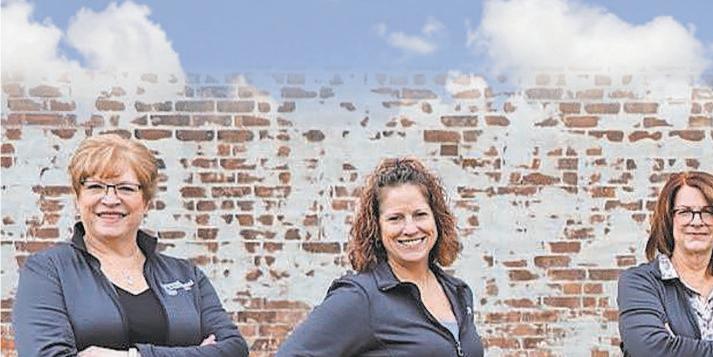

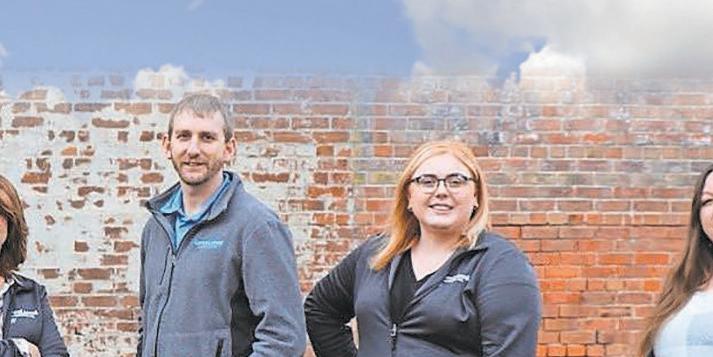


Litchfield noted that Stephanie Porter, ISA outreach agronomist, has been fielding some questions regarding replanting soybeans.
An article is featured on the Field Advisor website that provides resources from Science for Success on the replant issue.
“There’s also some questions about herbicides, herbicide injury, environmental injury and things like that,” Litchfield said.
“In my part of the world, we’re expecting very little replant. The biggest thing on corn for me is as long as emergence is even, I’m kind of OK. It’s where it gets really patchy I’m a little worried, but if we at least get a final
stand of 33,000, generally we’ll kind of let that ride,” Wiley said.
“Soybean-wise, a lot of guys are pushing bean populations lower. I think that’s kind of a trend, especially up here on most of the ground we’re working that’s kind of class A type soil. If it’s at least 100,000 stand we’re leaving it. A lot of planting population now are 120,000 to 130,000. There are some still run around 140,000.
“As we push later here, I always recommended after Memorial Day to increase by at least 1,000 seeds per day, which was kind of my old adage in ag retail.”
“I think the biggest issue I’m probably running into at the moment is this is kind of the land where high-speed discs are pretty popular, and needless to say with some rain that came in, we’re starting to see some crusting that’s
making it hard. So, you did have some trimmed down corn and bean stands,” Montgomery added.
“I’d say that environmental thing has been the biggest issue that more recently pumped up, and I’d say that’s in just the last few days people have had a chance to catch a breath, go out and actually look at the crop that’s in and say, yeah, it looks like it’s had a little bit of a tough time.
“I think that’s honestly been more an environment related and some pretty broke-down soil structure that packed pretty tight when we got the rain.”
“Where we planted and water didn’t stand on it, we’ve got a great stand. We’ve got 33,000, 35,000 corn stands, 140,000, 150,000 soybean stands, and where the water stood we’ve got zero. So, we don’t have bad stands,” Wilson said.
“We either have a good
stand or we have no stand. Luckily, the ground that was planted first was the first ground that was going to dry up anyway, except in the river bottoms and the sloughs.
“A farmer called the other day who treats his own seed on his farm and said he can sure tell the difference with the seed treatments we use now compared to what we’d been looking at. We’re able to save a lot of stands with a very good treatments we have today.
“I look back at the time many, many years ago when we didn’t treat anything unless it was a foundation or registered seed, and now everything gets that planted is pretty much treated. I can’t emphasize enough how much that saves us, because we just don’t rot in in the ground much anymore. It takes really serious conditions for that to happen.”





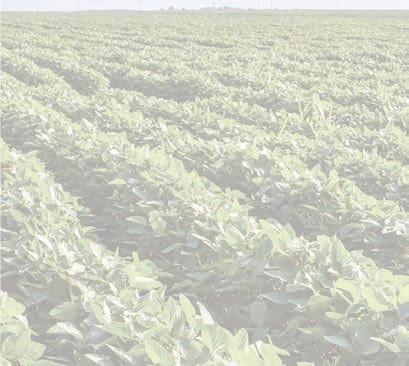





































Brad (at back) and Stephen Riskedal check on the cattle in their feedlot that are raised for the freezer beef enterprise Currently, 11 head of cattle are on feed and when they are ready for harvest, the beef will be delivered directly to their customers
‘Earthworms
of roots’
By MARTHA BLUM mblum@shawmedia com
LELAND, Ill. — The Riskedal family uses regenerative agricultural practices on their farm where they grow corn, soybeans and wheat along with feeding cattle for a freezer beef enterprise.
“We started using strip-till in 2019, and with the process of switching to reduced till, less chemicals and adding cover crops now we can go in the field and find earthworms
in any ball of roots we pull up,” Brad Riskedal said. “We couldn’t find them before.”
“All our corn is strip-tilled in the fall and everything else is no-tilled,” said Stephen Riskedal, Brad’s son and the sixth generation of the family to farm in La Salle County.
“We do a strip freshener in the spring on some acres, but for the most part we like planting in a stale seed bed.”
“Most of our acres have cover crops on them from last fall so we manage around the cover crops,” Brad said.
Ahead of soybeans, the primary cover crop has been cereal rye.
“We plant either a rye or barley with hairy vetch ahead of corn,” Stephen said.
“Almost all of our corn gets interseeded with cover crops when the corn is V3 to V6 between the rows,” he said.
“Between the reduced tillage and cover crops reducing our herbicide, this year our goal is a single pass of herbicide on everything.”
All the soybeans are planted into a standing cover crop.
“This year, we’ll use a herbicide to terminate the cover crops, but we also have a roller crimper,” Stephen said. “But our stand of rye this year was too light to have good termina-
tion with a roller crimper.”
“Planting into a cover crop is a strange thing to do,” Brad admitted.
“I planted soybeans last year into rye that was 5 feet tall and then we crimped it and sprayed it.”
“Sometimes we crimp the cover crop after the beans have emerged,” Stephen said. “If you do it at the wrong time, you snap off the beans, but if you do it at the right time the beans will push over and go right back up through the rye.”
“The beans last year hit the average yield; there was no yield penalty at all from the cover crops,” Brad said. “Although there was a time in June when the beans looked really bad.”
The farmers work closely with GreenCover Seeds, located in Nebraska.
“They do a good job of educating how cover crops work,” Brad said. “As a result, Stephen now has a dealership for cover crops and this is their first venture that far from their home.”
The Riskedals plant corn that ranges from 109- to 112day maturity and soybeans from 2.4 to 2.8.
“This year, we switched to all non-GMO corn and the company that certifies us for regenerative ag is working on building a market for nonGMO corn,” Stephen said.
“We were just going to plant non-GMO corn on one field to try it out,” he said. “But we don’t have the ability to segre-
We are about one-third done with planting. So far, Morris has been wetter this year, but we do have some beans planted there.
One thing I changed about a half dozen years ago was I started planting beans first. When I was planting everything with one planter, I did beans first and then switched to corn.
Now that we have two planters running, we start both corn and beans at the same time.
Brad Riskedal LELAND, ILL
gate our corn to identity preserve it, so we decided to go all in.”
This year, for the first time on their farm, the farmers will plant sorghum that will be sold for birdseed.
“Sorghum is a really good rotational crop for breaking up disease and insect life cycles,” Stephen said. “I’ve been told deer won’t eat it so it’s going on a 60-acre field that is close to timber.”
In addition to the 1,000 acres the Riskedals farm, they also cooperate with two other farm families.
“About 15 years ago, Matt Johnson was working for me driving a truck and farming,” said Brad, who owns a trucking company with his dad,
Steve.
“At the end of harvest, we figured if we combined our resources and worked together, we could probably do it cheaper in the same amount of time,” Brad said. “We did and we treat his farm as important as our farm and he responds the same way.”
The cooperation started as a way to save some money and now the families are benefiting from sharing labor.
“There’s enough of us that know what’s going on to jump in any piece of equipment to make things happen,” Brad said.
“Four or five years ago, Steve Jameson started working with us so we have fields from here to Harding to Morris,” he said.
This is the first spring the three farm families have rolled their planters together, going from six planters to two.
“We have a 12-row high speed planter and a 40-foot air seeder,” Stephen said.
“The important part of the air seeder is that opened us up to plant wheat better and cover crops in the fall,” Brad said.
The three families make their own decisions for inputs on their farms.
“We try to be compatible as far as herbicide programs,” Stephen said. “We try not to have all of one person’s crop harvested and none of the other so we go where it is fit and where it makes sense for bin space.”
See PAYS OFF, Page 12






PAGE 11
This year, the three farm operations will harvest a total of six crops — corn, soybeans, wheat, rye for cover crop seed, sunflowers and sorghum.
“As a small farmer, you wouldn’t try that many things in one year,” Brad said. “Because the learning curve would be too steep so we take turns on what we do.”
Whatever the farmers try, they share the data.
“We’re in each other’s fields and we’re using the same data management accounts so we can see what each other is doing,” Stephen said. “That’s been really beneficial for us all.”
Stephen and his brother, Darren, have raised cattle for freezer beef for many years.
“When I was about 4 years old, dad bought us two steers to teach us responsibly of taking care of animals,” Stephen said. “We continued to rein-
vest and it’s one of those FFA projects that hasn’t stopped.”
The beef is sold as quarters and halves and currently 11 head of cattle are in the feedlot.
“As we do more cover crops, we’re trying to figure out if there are opportunities to graze the cattle,” Stephen said. “I see that as an economical feed source, as well as being really good for soil health.”
Stephen knows how to raise cattle in the feedlot, market the beef and deliver it to consumers.
“But I don’t understand grazing livestock as well as I’d like to, so I’m learning,” he said. “I have to finish taking down the depilated fence to build new fence.”
Beef is delivered directly to consumers in the Chicagoland region.
“We have a really strong customer base,” Stephen said. “We’re really good at keeping existing customers, but I think we’re in a spot where we should grow.”



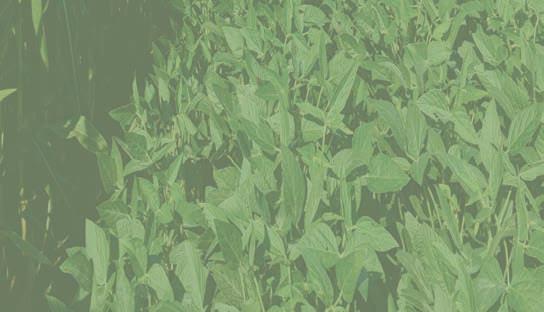
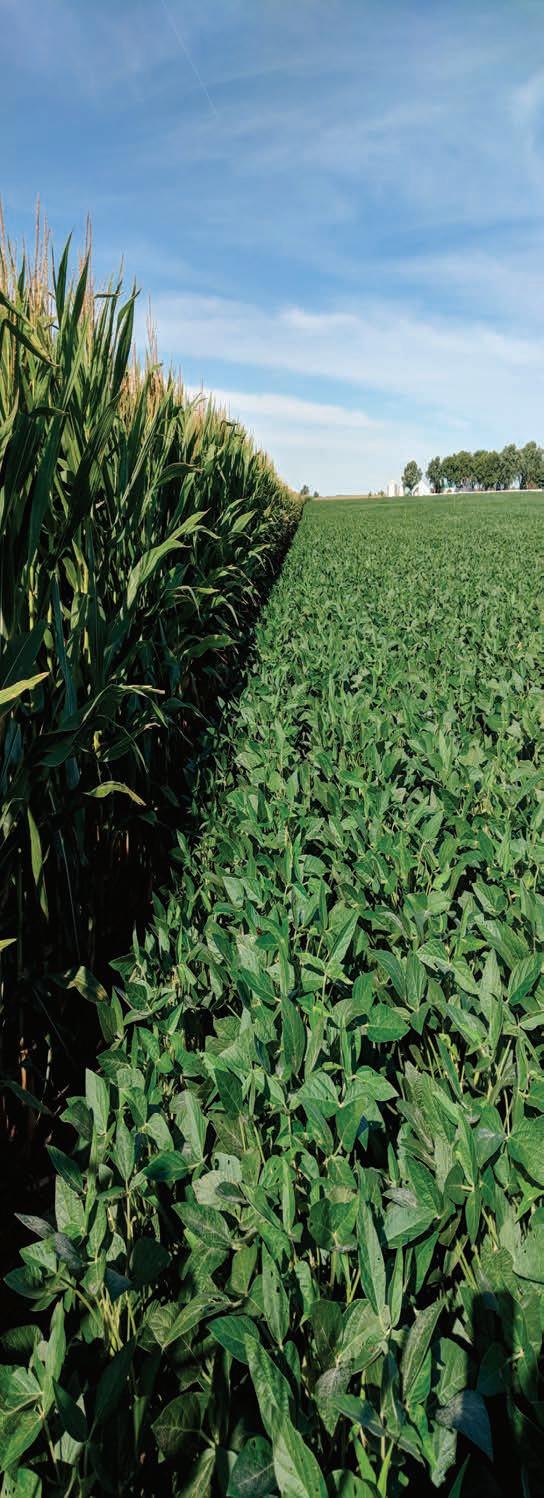

By TOM C. DORAN tdoran@shawmedia com
SPRINGFIELD, Ill. — Sangamon and Macon counties had the top average corn and soybean yields, respectively, in 2024.
County yields and production estimates in Illinois were recently released by the U.S. Department of Agriculture National Agricultural Statistics Service.
Sangamon County averaged of 248.2 bushels per acre, followed by McLean’s 246.7. Rounding out the top Illinois counties for average corn yields in 2024 were Macon, 243.8; Menard, 241.7; Piatt, 241.1; and Bureau, 240.8.
Counties with corn yields in the 230s were Carroll, 239.2; Knox, 238.2; Tazewell, 235.3; Ogle, 235.1; Logan, 234.5; Kane, 233.7; Livingston, 231.4; and Whiteside, 230.2.
Those counties with yields in the 220s were Greene, 229.1; Morgan, 228.5; Hancock, 228.2; Coles, 227.6; Cumberland, 226.3; Stark, 225.3; Douglas, 225.3; La Salle, 225; Edgar,
222.6; and Stephenson, 220.4.
Rounding out the counties with averages of 200 to 219 bushels per acre were Peoria, 218.4; Vermilion, 218; Effingham, 217.5; Iroquois, 213.8; Boone, 212.8; Jo Daviess, 212.2; Winnebago, 210.9; Fulton, 208.4; Clark, 208; Macoupin, 206.4; Montgomery, 205; Scott, 200.7; and Pike, 200.2.
Stark County held the distinction of have the highest yield average in the state the previous two years with 234.1 on 85,300 harvested acres in 2023 and 240.6 on 84,700 acres in 2022.
McLean led all counties in production with 76.231 million bushels, on 309,000 acres, followed by Livingston’s 67.685 million, on 292,500 acres.
Iroquois harvested 66.171 million bushels on 309,500 acres; La Salle, 62.663 million on 278,500 acres; and Bureau, 58.514 million on 243,000 acres.
Illinois farmers harvested 10.650 million corn acres for grain, averaging 217 bushels per acre, for a total production of just over 2.311 billion bushels in 2024.
Sixteen counties hit the 70-plus bushel per acre average plateau in 2024, led by Macon’s 77.8. Others in the top five were Piatt, 77.6; Sangamon, 77.3; Tazewell, 74.9; and
Woodford, 74.4.
The remaining counties at the 70-plus bushel mark were McLean, 74.2; Logan, 74; Bureau, 72.9; Morgan, 72.8; Edgar, 71.2; Coles, 71.2; Vermilion, 70.6; Greene, 70.5; Carroll, 70.3; Whiteside, 70.1; and Douglas, 70.
Counties hitting yield averages in the 60s were Livingston, 69.3; Peoria, 69.2; Knox, 67.6; La Salle, 67; Mason, 67; Stephenson, 66.3 Iroquois, 65.3; Macoupin, 65.1; Hancock, 64.3; Pike, 63.8; Kane, 63.7; Jersey, 63.7; Montgomery, 63.6; Clark, 63.3; Boone, 62.9; Fulton, 62.4; and Brown, 60.6.
Tazewell had the top 2023 soybean yield average at 74.7 across 120,400 harvested acres.
McLean led in soybean production with 22.634 million bushels on 305,000 harvested acres, followed by Livingston’s 19.508 million on 281,500 acres.
Iroquois produced 19.166 million bushels of soybeans on 293,500 acres, La Salle hit 17.253 million on 257,500 acres, Vermilion had 14.685 million on 208,000 acres and Sangamon harvested 14.061 million on 182,000 acres.
The Prairie State produced 688 million bushels of soybeans, averaging 64 bushels per acre across 10.75 million harvested acres.

815-866-9715















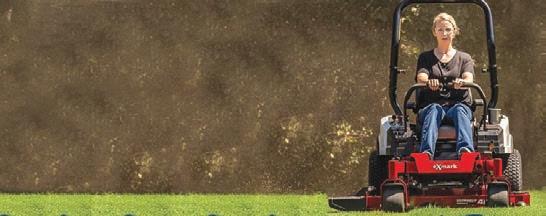






LA SALLE, Ill. — Come see the workings of agricultural sites in the I&M Canal National Heritage Area while discovering the rich history of the region.
On June 28, hop in the car for this self-guided driving tour to explore the area’s farms, barns and museums through this unique, family-friendly event.
On this one-day tour of agricultural and historic sites around northern Illinois, you will have rare, behind-the-scenes access to a pumpkin farm, a centennial barn, historical museums and local food and flower producers.
You will also have opportunities to view historical farm implements, see live demonstrations and browse ag-related craft products for sale.
All along, discover the area’s agricultural history, architectural elements of the properties and what it means to be a farmer in the 21st century.
Tickets are $25 for adults and free for kids 17 and younger, and tickets may be purchased in advance at https://bit.ly/AgTour2025. Tickets include exclusive access to nine locations open throughout the day.
“The barns and farms on this tour offer something for everyone, so it will be a great way to spend the day learning about the region’s rich agricultural history at sites only open for this tour,” said Donna Theimer, the tour’s lead organizer and volunteer with Canal Corridor Association.
Ticketed visitors should begin the tour by checking in at either the Dollinger Family Farm, the most southeastern stop at 7420

E. Hansel Road in Channahon, or The Farmacy Farmstand LLC, the most northwestern stop at 7260 Oakbrook Road in Newark, where they will receive entry wristbands and a tour map.
Tour sites will be open between 9 a.m. to 4 p.m. The event will occur rain or shine.
The CCA, the official coordinating entity for the I&M Canal National Heritage Area, is sponsoring this tour, which is designed to highlight the important connection between agriculture and the waterway that changed the course of history for Chicago, the Midwest and the country.
“The opening of the canal in 1848 had a profound impact on agriculture in northeastern Illinois and propelled corn to its preeminent status as the major cash crop in this part of the state, a position it has held ever since,” said Ana Koval, president of the CCA.
“This tour is a great way to relive that history with exclusive access to some of the region’s most picturesque farms — plus, you can
enjoy the stores, shops and cafés in canal towns across the tour.”
The I&M Canal National Heritage Area promotes the economic development, culture, heritage and stories of the region and communities that owe their growth to the canal.
Designated by Congress in 1984 as the first National Heritage Area in America, the I&M Canal follows its historic route from Chicago through 60 communities across north-central Illinois to La Salle-Peru, connecting Lake Michigan to the Illinois River.
Can’t make this tour? Not to worry — there are canal stories to discover all season long. Visitors are also encouraged to enjoy the I&M Canal this year with the CCA.
• I&M Canal Visitor Center & Boat Tour: The visitor center is open year-round in La Salle telling the canal story and enhancing the visitor experience with a café and gift shop. The Volunteer is a replica boat like those used in 1848 when the canal opened between Chicago and LaSalle, conducts over
300 tours annually, May through October, and uses the same energy source — a mule.
• I&M Canal Bike Rentals: Rent bikes at seven locations along the I&M Canal trails and explore gorgeous scenery, canal structures, historic sites and picturesque canal towns.
• I&M Canal Silhouette Program: 48 life-size CorTen steel silhouettes of historical figures throughout the area — telling their stories and the lasting impact they have had in building a strong and vibrant Illinois.
• Junior Ranger Program: Part of the National Park system, children of all ages can earn a Junior Ranger badge and learn about the history of the canal region.
• Trails: Over 75 miles rich in history and scenic views, interpretive signs and mile markers.
Those interested in exploring the I&M Canal may also visit iandmcanal. org to explore suggested day trips to the National Heritage Area, curating opportunities to engage with the region’s history, culture and recreational resources.








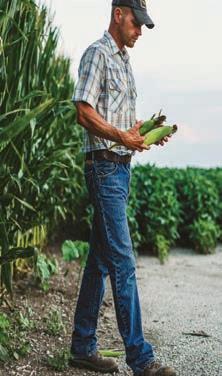








By MARTHA BLUM mblum@shawmedia com
BLOOMINGTON, Ill. —
A shortage of mental health providers is one of the factors that makes it difficult for those living in rural areas to get the help they need.

“It is suggested there should be 25.9 psychiatrists per 100,000 people, but in Illinois we only have 10.5 psychiatrists per 100,000 people — that’s less than half of the providers we need,” said Adrienne DeSutter, creator of the Sow Hope Grow Hope initiative.
“In rural areas, we have 1.2 psychiatrists per 100,000 people and most areas don’t have any psychiatrists,” said DeSutter during a presentation at the 2025 Rural Mental Health Summit at the Agricenter in Bloomington, hosted by the Southern Illinois University Center for Rural Health and Social Service Development .
In Illinois, there are 9.8 million people who live in a mental health professional shortage area, she reported.
“What’s even more wild to me is that 43% to 53% of the people who either have a mental health condition or are experiencing some sort of mental health crisis are seeing professionals,” DeSutter said.
“So, it comes to no surprise that our suicide rates are 2 to 1 for rural versus urban,” she said. “That’s a telling number that means
By MARTHA BLUM mblum@shawmedia com
BLOOMINGTON, Ill. —
Women involved in the agricultural industry are generally expected to live a triple-duty lifestyle that can lead to depression and anxiety.

“Farm women are the homemakers and they also engage in farm work,” said Cheyanne Dierickx, University of Illinois visiting Extension outreach associate.
“They often have offfarm careers, as well, to ensure a stable income when market prices are unstable and to also secure health insurance,” said Dierickx during a presentation at the 2025 Rural Mental Health Summit.
“So, it’s no wonder there’s a higher prevalence of anxiety, depression and psychological stress among women in agriculture,” she said.
Men are no stranger to the stressors of agricultural life and the traditional gender roles impact them, as well.
“Men feel like they need to be the sole financial provider, and if they are not, that can really impact their ego or masculinity,” Dierickx said.o
“Men feel like they need to be tough, not show emotion and they don’t need help,” she said. “That
By MARTHA BLUM mblum@shawmedia com
BLOOMINGTON, Ill. —
Although Illinois Farm Bureau has worked to provide mental health and awareness resources to its members for several years, the statewide group is focused on expanding that commitment.

“About a year ago, our president, Brian Duncan, came back from an American Farm Bureau meeting where he heard about a survey that was done by a state Farm Bureau,” said Evan Hultine, vice president of IFB.
“Over half of the respondents in the survey said they had considered or thought about self-harm,” said Hultine during a presentation at the 2025 Rural Mental Health Summit.
“Brian called the management team to the table and said, ‘I don’t think we’re doing enough, so we need to expand the conversation and the resources,’” Hultine recalled.
“‘And even if we can’t get people to come and talk, at least maybe they can hear the message and we can provide some help to our farmers.’”
Farmers have a lot of challenges to navigate going forward.
“We know a lot of stressors are not going away and some of them are going to get worse,” Hultine said. “And some of them are going
FROM PAGE 17
we have to do something.”
A study at the University of Illinois found that approximately 60% of farmers experience anxiety and depression, DeSutter said.
“And they found out so do the farm children,” she said.
DeSutter, who grew up in the country, but not on a farm, started advocating about mental health in 2018.
“I was surrounded by fields, but I couldn’t tell you what was growing in them until I was about 21 years old,” she said. “I could not tell you what a tractor was versus a combine until I married a farmer.”
“My husband, Drew, is a fourth-generation farmer and he suffers from mental health, so he is the reason I started doing what I do,” she said. “I share information and try to raise awareness to get people motivated to do some things in the mental health realm.”
Along with events like the May 15 summit, which was presented by the SIU Medicine Farm Family Resource Initiative, DeSutter also writes articles and conducts workshops.
“I did it because of him, because I wanted him to know that this is a real issue,” she said.
In addition, to finding resources for her husband, DeSutter said, it was important to provide information for their friends who had similar situations, as well as for children.
“Genetically speaking, we’re probably going to be dealing with mental health conditions at some point in our life with our kids,” she said. “I need to know I’ve done everything I can and there will be resources for them as they get older.”
Farmers deal with many stressors such as weather, financial, isolation, long work hours, family dynamics and work-and-home balance.
“This spring, my husband saw our kids probably a total of 24 hours in five weeks,” DeSutter said.
FROM PAGE 17
can impact their ability to seek help and that puts them at a higher risk for substance abuse and suicide compared to farm women.”
There are many stressors unique to agriculture that are not necessarily applicable to nonfarming people.
“Agricultural producers experience anxiety and depression more often than the general population which makes sense as to why they are two to five times more likely to die by suicide,” Dierickx said.
A study of Illinois farmers conducted by the U of I found that three in four farmers reported alcohol use in the past three months and around 30% reported tobacco use in the past three months.
“That’s higher than the general population,” Dierickx said.
The opioid crisis is also a problem in rural communities.
“An American Farm Bureau Federation study found the opioid crisis has impacted 74% of the farmers and farm workers,” Dierickx said.
Not only are agricultural populations more at risk for poor mental health, she said, they also have more barriers to receiving treatment.
“Those barriers can be condensed to the 4As — accessibility, availability, affordability and acceptability,” she said.
In response to this, the Illinois Agricultural Mental Health Voucher Program is available to farmers and their families to provide free mental health care.
“This started in partnership with the Illinois Department of Agriculture and the goal is to improve mental health for farmers and their families by reducing barriers to professional mental health care,” Dierickx said.
FROM PAGE 17
to get harder.”
Those stressors include increased farm consolidations due to the average age of farmers, the cost of farming, the market outlook, political and cultural pressures and regulatory pressures.
“We’ve been seeing more drastic and severe weather,” the farm leader said. “So, we need to help our farmers when they are flooded and they can’t get their crop in the ground.”
Hultine, a sixth-generation farmer, knew from a very early age that his career goal was to farm.
“I spent more time in a tractor cab than on a ballfield,” he noted.
After studying ag production in college, Hultine worked off the farm for a couple of years.
“My dad was in his early 60s and he had a little bit of a health scare that was enough of a trigger for him to say it is time for Evan to come back and manage the farm,” the said.
This farm transition, Hultine said, went about as smooth as it could go.
“I think that was because my dad and I have real strategic differences,” he explained.
“The things my dad hated about farming are the things I actually really enjoy,” he said. “So, it was pretty easy for him to hand off some of the administrative, management and business-oriented parts of the farm.”
Even the farm families that have the hard conversations about estate planning and have done the business planning, Hultine said, can still struggle with mental health challenges.
Helping farmers navigate into retirement is a shortfall that needs to be addressed.
“My dad’s generation is a large part of the retiring group of farmers that farmed through the ‘80s,” Hultine said. “A lot of farms survived the ‘80s because the farmers went to town and got a job Monday through Friday and during
Another stress factor is the fear of losing the farm.
“If the farm has been in your family for five generations and you lose the farm, it feels like you have failed your entire lineage,” DeSutter said.
Over the past several years, many resources and programs have been developed to help farmers and farm families with their mental health and breaking down the stigma.
“In 2018, we couldn’t even say mental health — it was too much of a barrier,” DeSutter noted.
“It’s been very cool to see as each person or organization built up enough courage to share some piece of mental health, as awkward as it may be,” she said. “It’s been very encouraging to see that we have been pulling down that stigma.”
During a discussion at the Farm Progress Show, one of DeSutter’s farmer friends said that he took medication.
“Then another guy said I do, too, but I thought I was the only one,” she recalled. “When we share, it spreads like wildfire.”
Like many other farm families, the DeSutters are focused on working until the job is complete.
“It’s about what we choose to do,” the farmwife said. “One night, my husband said to his dad, ‘I think I’m going to go home tonight because I need a break.’”
It is important to set boundaries and take care of ourselves, she stressed.
“And the next week dad decided he was going to take a night off,” DeSutter said.
“It takes everyone, no matter if you’re a therapist, a counselor or a farmer,” she said. “Any part you can play to break down the stigma of mental health is really critical.”
The Farm Family Resource Helpline is available 24 hours a day, seven days a week at 833-FarmSOS, or 833-327-6767.
For more information, go to www.siumed.org/farm.
For the program, licensed mental health providers were recruited across the state.
“Anyone who is a producer, farm worker or family member who lives in Illinois is eligible,” Dierickx explained. “Once a voucher is requested, we initially send them three vouchers and a provider directory and after that they can request more vouchers as long as funding is available.”
The individual redeems the voucher with any participating provider.
“Then we reimburse the provider directly and no proof of insurance is needed,” Dierickx said.
This voucher program has grown significantly over the past three years. In 2022, there were 87 requests, and the following year the requests increased to 126.
“In 2024, we had a 521% increase in requests for vouchers that totaled 783,” Dierickx said.
U of I Extension leads the North Central Farm and Ranch Stress Assistance Center that includes a 12-state region. The goal of this collaboration is to create stress management and mental health resources for agricultural communities.
“We also work with Illinois AgrAbility that helps farmers with physical disabilities whether it’s due to aging or injuries so they can continue farming and maintain their independence,” Dierickx said.
“There are tools that we can provide them to continue farming safely and this goes hand in hand with mental health.”
For more information about the NCFRSAC, go to www.farmstress.org.
the evenings and weekends they did the farm work.”
As a result, these farmers didn’t have time for hobbies.
“Now when they have time, they don’t want to do anything else but farm,” Hultine said.
This situation puts stress on marriages, families and the active farming generation.
“They get asked daily, what do you want me to do today?” Hultine said. “There’s stress when you have to decide how many small dents, dings and oops are too many.”
There is a lot of information and people available to talk about developing financial retirement plans.
“I don’t know why we’re not talking about emotional and wellness advisers for retirement,” Hultine said. “Our farmers should be hearing from the time they are 20, 30, 40 and 50 about what they are going to do when they are no longer farming.”
Many farmers have not thought about their plans once they retire.
“Now they are slapped with it and they don’t know what to do,” Hultine said. “So, with every ounce of their will, they are clinging to every little bit of still being an active farmer that they can and that is hard.”
It is a challenge, Hultine said, to determine when how many accidents are too many accidents.
“If you work for a company and you have enough accidents, they say, see you later,” he said.
“You are not going to fire your dad — that’s not an option,” he stressed. “That’s not what a farm family does.”
Hultine is unaware of any materials that focus on how to have the talk about hanging up the boots, stop putting the pliers on the belt or giving up the keys.
“These are real situations,” the IFB vice president said.
“We talk a lot about farmers’ mental health in context of the active farmer,” he said. “But there’s a host of other issues affecting the farm family, so we have a lot of important things to address.”

















































Ag contributes $51 billion to state economy
By MARTHA BLUM mblum@shawmedia�com
CHICAGO — The Illinois Chamber of Commerce is the independent voice for businesses across the state.
“We are fully independent, we work for our members, with our members money and we don’t take money from the state,” said Lou Sandoval, president and CEO of the Illinois Chamber of Commerce.
The chamber represents over 3,000 members. About 35% of this membership includes large companies such as John Deere, Caterpillar and Abbott Laboratories.
“But the other 65% is the most important — the companies with less than 500 employees that are the backbone of America,” said Sandoval during a presentation at The Chicago Farmers meeting.
“They make up 99.6 % of all businesses in the state.”
Agriculture, he said, is the No. 1 contributor to Illinois’ over $1 trillion gross domestic product.
“To stay in that top position and to position our state as a national global leader in food production, agricultural innovation is going to be important,” he said.
Illinois agriculture contributes $51 billion to the Illinois economy, the chamber president reported.
“Agriculture is a significant employer of 400,000-
plus jobs, which is one out of every 17 jobs,” Sandoval said.
“We are a leading exporter. Illinois ranks fifth nationally in agricultural exports, which is about $10.6 billion worth of goods,” he said.

Sandoval talked with President Donald Trump on April 8.
“There’s a lot of dialogue going on with Mexico and Canada,” he said. “In July, I’m headed to Canada for an energy meeting with their prime minister to talk about the energy forward vision of the administration.”
Currently, technological advancements are at an inflection point, similar to other times in history, such as when the Model T was invented in 1908.
“By 1915, the horse and buggy were pretty much obsolete,” Sandoval said.
“If you are fighting technology, you’re like the horse and buggy industry,” he said. “Artificial intelligence is coming, so have a seat at the table and get on board.”
Sandoval said he advises everyone to be lifelong learners and develop a growth mindset instead of a fixed mindset.
“The skill of constantly pivoting will take you to the next level and give you resilience as you learn to adapt,” he said.
Sandoval discussed several headwinds that are impacting the agricultural industry, including climate and weather change extremes that are becoming more the norm. As a sailor, he tracks patterns.
“Because we have a hot land mass, the hot air rises and mixes with the cold air at the top of the jet stream and that creates thunderstorms,” he explained. “There is a band from Milwaukee to Oshkosh that we see a ton of weather come in.”
For the past 25 years, Sandoval has competed in the Chicago Yacht Club Race to Mackinac that starts in Chicago and finishes on Mackinac Island.
“The last six years, I’ve seen more and more storms,” he said.
Labor shortages, supply chain disruptions, input cost inflation, land and water access challenges, trade policy, market access uncertainty and demographic and succession issues are also challenges facing the agricultural industry.
“There’s regulatory and political complexity and we’ve been talking to the governor about the estate tax,” Sandoval said.
“You don’t want to sell your farm to a private equity firm, but sometimes your heirs don’t have an option, so we’re chasing money out the door.”
However, the chamber president said, these headwinds can be navigated with technology.
“Iron Ox is a startup company that is using robotics to pull greens off of hydroponic farms,” he said. “These devices are working with human beings to increase yield and productivity and they also continue to work when it’s time for the
humans to go home.”
Another example is GUSS that utilizes autonomous spraying technology.
“It is basically a tank on wheels that does watering in apple orchards and pesticide distribution,” Sandoval said.
Illinois universities are an important aspect of technology development, Sandoval said.
“The U of I Research Park is something to be really proud of. It is one of the innovative strengths we have,” Sandoval said.
“For us at the chamber, policy formation includes looking at research funding, so the universities have adequate funding,” he said. “It’s important we fund the universities. We can’t just redistribute the money because that weakens the other universities.”
The chamber focuses on policy advocacy and partnership building.
“We also focus on innovation programs and we are currently in partnership with the Springfield Innovation Center to bring capital to the U of I Springfield campus to invest in ideas that are there,” Sandoval said.
“You can’t just have all the venture capital in Chicago. It needs to be distributed throughout the state.”
Collaboration includes four pieces of the wheel — industry, government, academia and community.
“The chamber likes to run point on being the connector,” Sandoval said.
“We’re not about picking winners or losers. We’re about making sure all the pieces are talking to each other.”























Gripp Custom Farming Corp. has been a family owned and operated business since 2002. We are interested in providing the best value for your acres by offering all the services and products required to successfully raise crops We are able to better serve our customers with locations in Wyanet and Sheffield, IL
Custom Farming has bee owned and business sinc We are interested in the b for your acres all the ser products to ra We are to serve our custo locations in and Sheffie n a family e 2002 est value vices and ise crops mers ld, IL

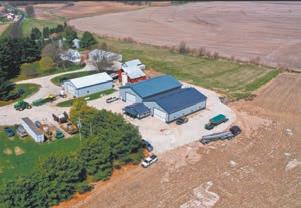
Crop Protection Crop p Protection n & & Nutritional Sale Nutritionall Sale
Ground Application
Ground Applicatio Ground Appliiccatiio
Drone Aerial Application
Drone Aerial Appl Drone Aeriaal A Appli
*Check out SweetWater Tech *Check out SweetWater Tech for more info on our drone d more iinnfo on our d Soil Testing Soil
*Check out SweetWater Technologies for more info on our drone division* Soil Testing More Stop by or contact us: 815-454-9600
Stop or contact us: FB: Custom
FB: Gripp Custom Farming, Corp. www.grippccustomfarmingcorp.com

Sh 4 W s s n n ication iccaation nnologies ologgiees iivision* vision*


